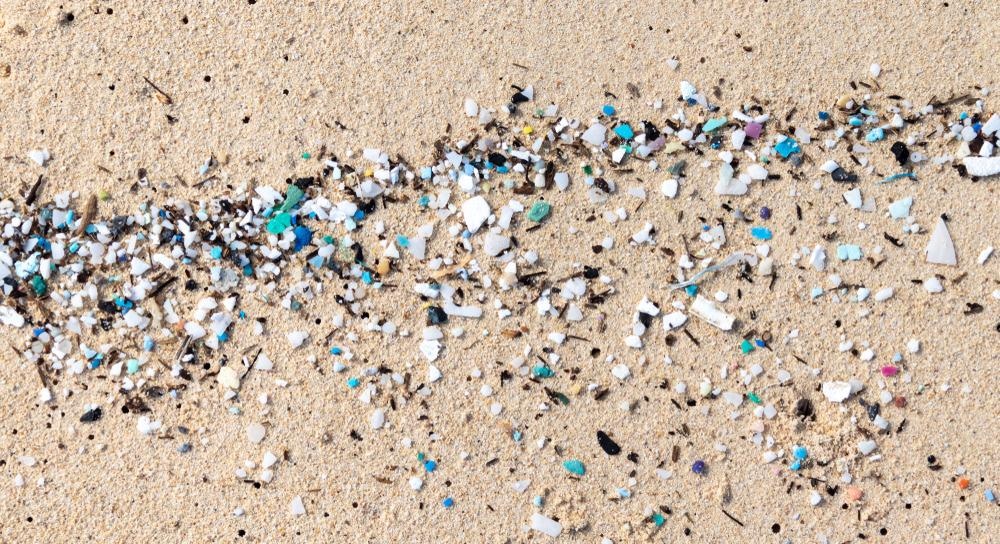Microplastic pollution within household wastewater is a major threat to marine life and human health. This has given rise to research into advanced technologies for purification where there has been limited traction so far.

Image Credit: Eric Dale/Shutterstock.com
A study has investigated the use of an integrated carbocatalytic oxidation and hydrothermal hydrolysis of microplastics over magnetic spring-like carbon nanotubes in order to combat this issue for a greener economy. This article will explore the effect of microplastics on marine life and how novel nanotechnology approaches could be used to degrade microplastics.
Microplastics can be characterized as being a subgroup of plastics that have a diameter of less than 5 mm, and have become a microcontaminant as a waste product in aquatic systems. This widespread presence microplastics have in the oceans is the cause of ineffective and inefficient recycling as well as through elimination through conventional wastewater purification technology.
Microplastics can be sub-divided into primary and secondary groups and predominantly originate from household cosmetic products and the breakdown of larger plastics. Examples of these products include ‘microbeads’ which are put into exfoliating skincare products that are released down the drain into sewage and are difficult to eliminate by water treatment plants.
The Effect of Microplastics
Microplastics have been detected within shellfish, fish, and seabirds. This can subsequently lead to ineffective ingestion causing the marine animals to feel continuous hunger and can even lead to death.
The effect can also be found in the food chain as it can affect senior predators and even alter the course of prey-predator cycles. If prey is not available due to this extraneous element, predator numbers will decrease, and in the same way, if this affects predators, prey numbers will increase, affecting the food availability for their population. Both of these consequences can wreak havoc on natural selection which can ultimately damage the survival of species.
Microplastic Decomposition
The natural decomposition of microplastics can take decades to complete and can also be dangerous for the external environment due to the subsequent release of hazardous organic substances from polymers and additives such as plasticizers in manufacturing. The breakdown of microplastics can also cause them to be used as a vector for the transport of toxic hydrophobic organic pollutants as well as heavy metals which can lead to an accumulation of biohazardous waste that can poison marine life.
Advanced oxidation processes (AOPs) are a type of chemical remediation technology that utilize reaction oxygen species (ROS), and have been found to be a method for complete mineralization of organic pollutants in the water. However, this can consist of using sulfates and transition metals which can cause associated secondary pollution from metal leaching, as well as waste by-products such as sludge, and this can limit their use in reality.
An Eco-Friendly Alternative
An alternative approach has been investigated as a promising alternative to metal catalysts in AOPs, such as metal-free nanocarbon materials that include graphene and carbon nanotubes. These novel materials would be beneficial for this purpose, due to their engineered dimensional structure and eco-friendly nature. However, the challenge with using these materials include having mediocre stability levels in an oxidative environment. This obstacle requires overcoming before nanocarbon materials can be used effectively, so as not to compromise their robust catalyst nature with their level of stability in this environment.
A group of international researchers of a paper published in a cell press journal, Matter, led by Jian Kang from Curtin University, Australia, has undertaken this challenge of exploring the degradation of cosmetic microplastics through utilizing functionalized carbon nanosprings. They discovered that heteroatom doping, whereby some carbon atoms within a graphitic structure are replaced by heteroatoms, due to their size and electronegativity compared to carbon atoms, create more active sites with enhanced catalytic activity for peroxymonosulfate activation. This would lead to the production of ROS and overall oxidation advancement.
The study developed nanocomposites through encapsulation of manganese carbide nanoparticles (Mn@NCNTs) in helically N-doped carbon nanotubes via one-pot pyrolysis. These hybrids were applied for peroxymonosulfate activation purposes and microplastic degradation under hydrothermal (HT) conditions with a positive finding that both of these factors are significant for microplastic mineralization.
A synergistic effect of nitrogen doping, transition metal encapsulation as well as the robustness of utilizing Mn@NCNTs enabled significant degradation of microplastics while requiring a noticeably reduced level of activation. The researchers illustrated that their manganese carbide nanoparticles and peroxymonosulfate system can realize 50 wt % of microplastic removal by aiding the hydrolysis process.
Toxicology reports were also found to be non-hazardous to microorganisms which further illustrates how this novel eco-friendly approach could be used as an alternative mineralization approach for degrading microplastics in the water.
An eco-friendly approach to mineralizing microplastics has become a high priority for environmental scientists as well as the public, who are becoming more aware of the dangers of everyday household products for the environment. This group of international researchers has enabled the research of this integral sector of science to advance further, and this will hopefully lead to a lasting effect on how biohazardous waste is decomposed without a subsequent effect on marine life and the environment as a whole.
References and Further Reading
Kang, J., Zhou, L., Duan, X., Sun, H., Ao, Z. and Wang, S., 2019. Degradation of Cosmetic Microplastics via Functionalized Carbon Nanosprings. Matter, 1(3), pp.745-758. https://doi.org/10.1016/j.matt.2019.06.004
Disclaimer: The views expressed here are those of the author expressed in their private capacity and do not necessarily represent the views of AZoM.com Limited T/A AZoNetwork the owner and operator of this website. This disclaimer forms part of the Terms and conditions of use of this website.